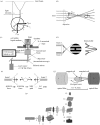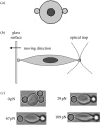Optical tweezers for single cells
- PMID: 18381254
- PMCID: PMC2408388
- DOI: 10.1098/rsif.2008.0052
Optical tweezers for single cells
Abstract
Optical tweezers (OT) have emerged as an essential tool for manipulating single biological cells and performing sophisticated biophysical/biomechanical characterizations. Distinct advantages of using tweezers for these characterizations include non-contact force for cell manipulation, force resolution as accurate as 100aN and amiability to liquid medium environments. Their wide range of applications, such as transporting foreign materials into single cells, delivering cells to specific locations and sorting cells in microfluidic systems, are reviewed in this article. Recent developments of OT for nanomechanical characterization of various biological cells are discussed in terms of both their theoretical and experimental advancements. The future trends of employing OT in single cells, especially in stem cell delivery, tissue engineering and regenerative medicine, are prospected. More importantly, current limitations and future challenges of OT for these new paradigms are also highlighted in this review.
Figures




References
-
- Andersson M, Madgavkar A, Stjerndahl M, Wu Y, Tan W, Duran R, Niehren S, Mustafa M, Arvidson K. Using optical tweezers for measuring the interaction forces between human bone cells and implant surfaces: system design and force calibration. Rev. Sci. Instrum. 2007a;78:074302. doi: 10.1063/1.2752606. - DOI - PubMed
Publication types
MeSH terms
Grants and funding
LinkOut - more resources
Full Text Sources
Other Literature Sources
